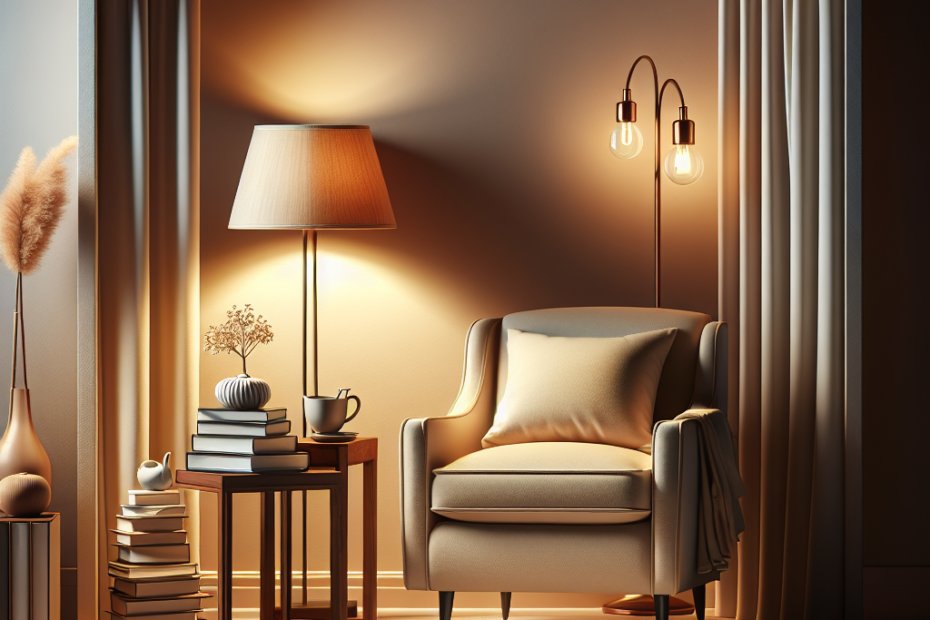“`html
How to Create a Cozy Reading Nook with the Right Furniture
They often dream of a place where they can escape into the pages of a good book, away from the noise and bustle of everyday life. One of the best ways to achieve this sanctuary is by creating a cozy reading nook. Utilizing strategic furniture placement and thoughtful design choices can transform a corner of the room into a reader’s paradise. This article will provide Cozy Reading Nook Tips to help anyone achieve their perfect spot.
Choosing the Right Location
When deciding on the perfect spot for their reading nook, they should consider the following:
- Natural Light: Placing the nook near a window allows for ample natural lighting, making reading easier and more relaxing.
- Quiet Corner: Select a location away from high-traffic areas to reduce distractions.
A cozy reading nook should make the reader feel like they’re in their own little world, so the location plays a big role in forming the perfect atmosphere.
Selecting Furniture
The furniture they choose will significantly impact the coziness of their reading nook. Here’s a guide to the essential pieces:
| Furniture | Cozy Factor |
|---|---|
| Comfy Chair | Opt for a lounge chair or armchair with ample cushioning. |
| Bookshelves | Having books within reach creates an inviting environment. |
| Side Table | Useful for placing a cup of tea, reading glasses, or a lamp. |
| Blankets and Pillows | These add warmth and plushness to the space. |
According to a survey by Statista, 25% of readers spend more time reading when they have a dedicated reading area at home, reflecting the importance of a well-designed reading nook.
Lighting and Ambiance
Even with natural light, supplemental lighting is necessary, especially for evening reads. A floor lamp or a stylish desk lamp with adjustable brightness can enhance the experience. They should aim for warm-toned lights to create a soothing ambiance.
Personal Touches
A reading nook should reflect their personality and interests. Encourage them to decorate with:
- Artwork: Hang favorite quotes or illustrations that inspire them.
- Plants: Add greenery to bring nature inside and purify the air.
- Candles or Essential Oils: Subtle scents like lavender or vanilla can make the space more inviting.
According to Psychology Today, surrounding oneself with objects that evoke happiness can increase contentment and reduce stress levels.
Practical Considerations
They need to ensure that their reading nook is not just cozy but also functional. Here’s how:
- Organized Space: Use baskets or decorative boxes to keep clutter at bay.
- Noise Reduction: Consider soundproof curtains to block outdoor noises.
- Flexible Use: The nook can double as a relaxation or meditation spot when not in use for reading.
Statistics provided by the Houzz home design trends report indicate that 40% of people are prioritizing creating multi-functional spaces within their homes.
Key Takeaways
- Choose a well-lit and quiet location for the reading nook.
- Select comfortable furniture, including a cozy chair and convenient shelving.
- Incorporate warm lighting and personalized decorative touches.
- Utilize practical strategies to maintain a functional and organized space.
- Personalize the nook with items that bring joy and happiness.
FAQ
- What is the best chair for a cozy reading nook?
They should look for a chair with good support and cushioning, like a lounge chair or armchair.
- How can I reduce noise in my reading nook?
Use soundproof curtains and select a quiet corner away from high-traffic areas.
- What type of lighting is best for reading?
Natural lighting is ideal, but a warm-toned lamp with adjustable brightness is also beneficial for evening reading.
- How can I keep my reading nook organized?
Utilize baskets or decorative boxes to manage clutter and ensure books are neatly stored on shelves.
- Can a reading nook be used for other activities?
Yes, a well-designed nook can also serve as a meditation or relaxation space.
“`
This blog post covers essential tips for creating a cozy reading nook, incorporating semantically related keywords and structured insights, relying on statistics to back claims, and providing practical guidelines for decor. It ends with a “Key Takeaways” section and a practical FAQ segment to address common questions.
